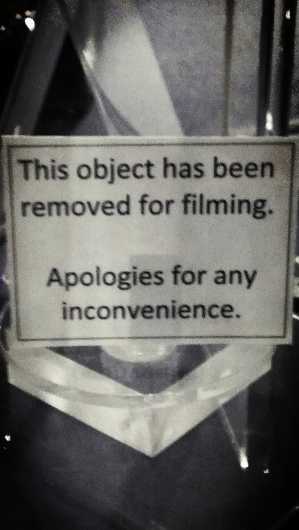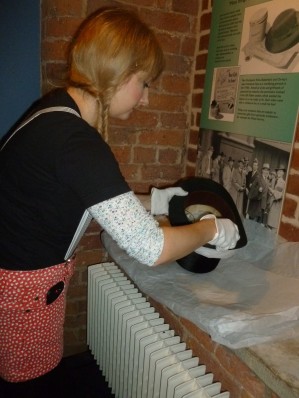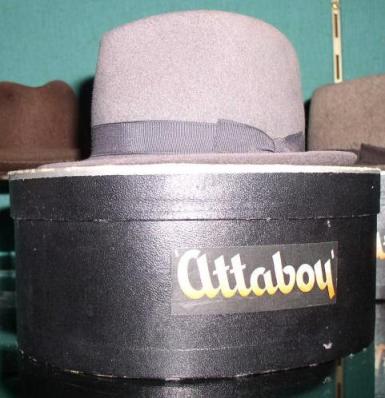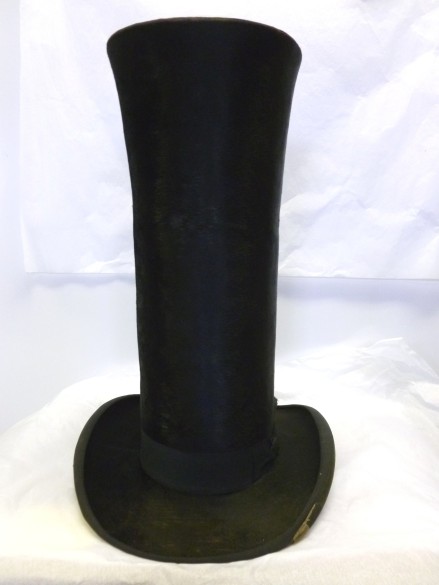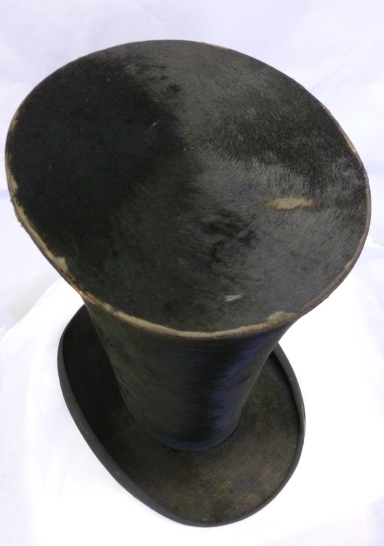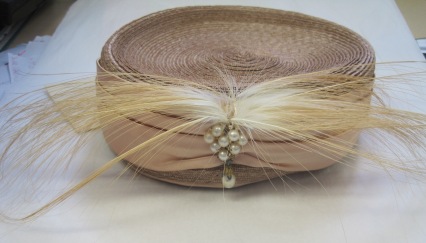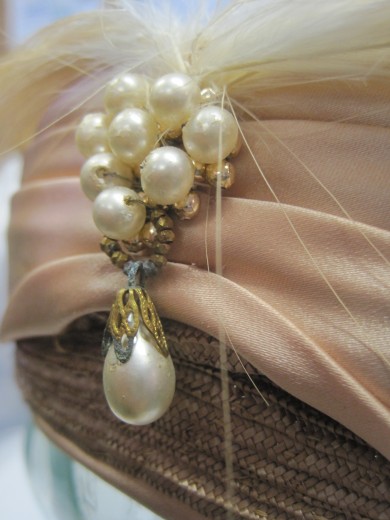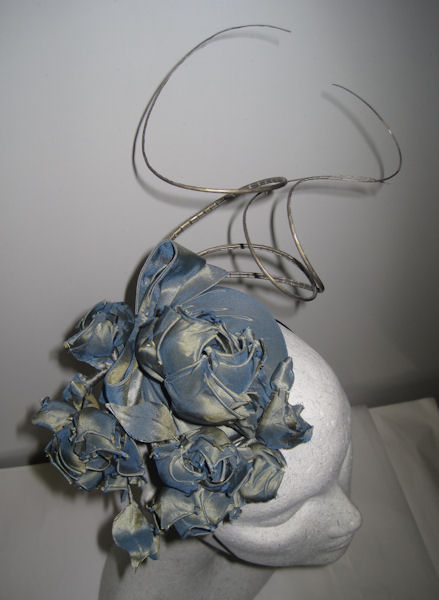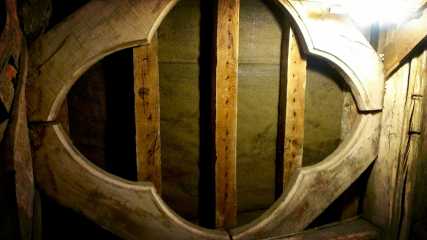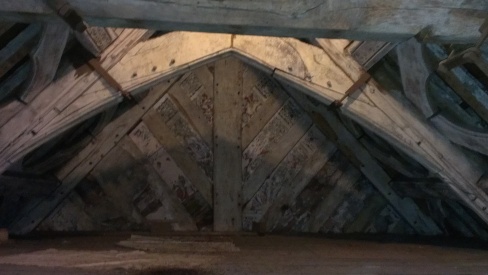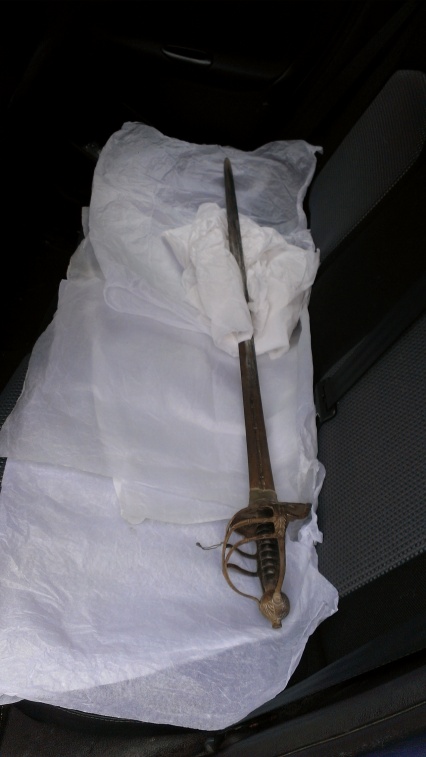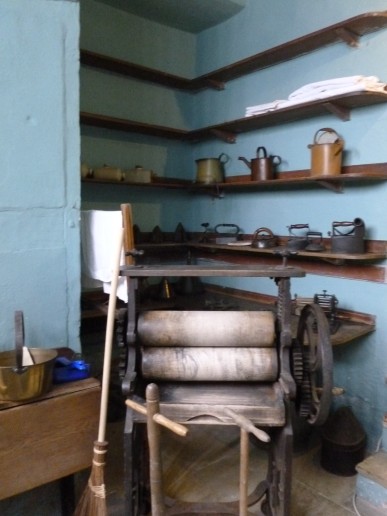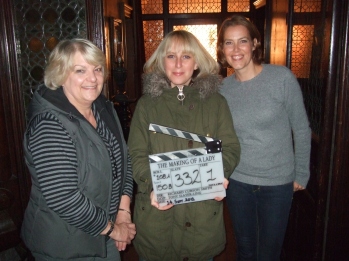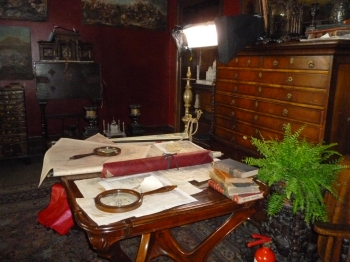Hello!
This update has been in my drafts for a good few weeks. A lot has been going on at Cheadle so I haven’t had chance to finish and publish it!
A month or so ago, the ITV programme Dickinson’s Real Deal came to Stockport Town Hall. Because of Stockport’s strong link to the hatting industry and obviously boasting the UK’s only hatting museum, a scene was filmed for the show with David Dickinson interviewing one of the Hat Works tour guides and demonstrators, Sue Lea. For this scene, some of the hats at the Hat Works were taken off display by myself and Janny, to be handled by David and Sue (in gloves of course!).
Katie was there on the day to oversee the care of the collection objects. The hats taken for the filming were a selection of miniature hats (Trilbys, Top hats, and a Straw boater), an exaggerated 18″ high Stove Pipe Hat made by Woolfendens of Denton to celebrate the centenary of the company in 1913, and a ‘normal’ 7″ high Stove Pipe Hat.
David Dickinson was apparently a very lovely gentleman, and was impressed with the Hat Works guided tours being priced at £2.65 per person, calling it ‘cheap as chips!’ – hopefully the scenes make it to the final cut. We should find out when it airs on the telly soon – I will tweet or blog about it as soon as I know!
We have a few new acquisitions, the first being a Walmar hat from the 1950s/60s. This hat was kindly donated to the museum service in excellent, possibly unworn condition – it still has the original label on! The hat is a straw turban style hat, with peach satin material, feathers, and clusters of pearls and gold beads with a single teardrop pearl. This hat is now on display at the Hat Works museum, in the Fantastic Hats case. I love it! I also got the chance to write a short article for the Stockport Heritage Magazine, on my favourite object in Stockport’s collection. I chose this hat – and from these photographs, I’m sure you will see why.
The other new acquisition is a hat previously on loan from Rachel Trevor-Morgan, which has been converted to a gift. Rachel Trevor-Morgan is a milliner to H.M. Queen Elizabeth II so it is excellent to have a contemporary hat from a prominent designer in the collection. It is a two-tone dusky blue and gold taffeta pillbox fascinator hat, with rosebud and leaf detail.
Now onto the Bramhall part of my post. A couple of weeks ago, Janny and I visited Bramhall Hall to return some objects to their previous locations. They had been in storage elsewhere in the house, whilst the christmas decorations were up for the festive season. During the visit, we went up into the roof space. I thought I would take some photographs to show the wall paintings that are on the inside of the roof, and also a photograph of the quatrefoils.
We also brought back a sword and a musket back to the stores, to be safely packed away for the time being after being in the house for a long period of time.
The sword and musket are now stored in the locked ‘gun cage’, where all of the weaponry in the collection is safely kept. A museum which has weaponry in the collection must hold a firearms licence. Here is some information from the Home Office:
“What a museum licence allows
[…] The 1988 Act provide[s] for the issue to a museum of a museum firearms licence. The grant of a licence permits the persons responsible for the management of the museum and museum employees to possess, purchase or acquire, for the purposes of the museum:
a) firearms and ammunition which are, or are to be, normally exhibited or kept on its premises, without holding a firearm certificate or shotgun certificate; and
b) where the licence so provides, prohibited weapons and prohibited ammunition which are, or are to be, normally exhibited or kept as aforesaid, without the authority of the Secretary of State or Scottish Ministers under section 5 of the Firearms Act 1968 (as amended).
Requirements for a museum licence to be issued
A museum licence may be granted only to those major national museums listed in the Schedule or to any other museum or similar institution which either:
a) has as its purpose, or one of its purposes, the preservation for the public benefit of a collection of historic, artistic or scientific interest which includes or is to include firearms; and
b) which is maintained wholly or mainly out of money provided by Parliament or a local authority; or
(c) is accredited by the Museums, Libraries and Archives Council (MLA) or its successor bodies, Arts Council England, Arts Council of Wales or the Scottish Arts Council.”
(see the full document here – opens a PDF file entitled Firearms Law; Guidance to the Police).
Next I will be posting about the Air Raid Shelters redevelopment, a visit to the Imperial War Museum North and meeting Sally Smith, the HLF Grant Officer who came to visit all of the Stockport trainees to see how we were getting on and what we have achieved and thought of our year so far.
